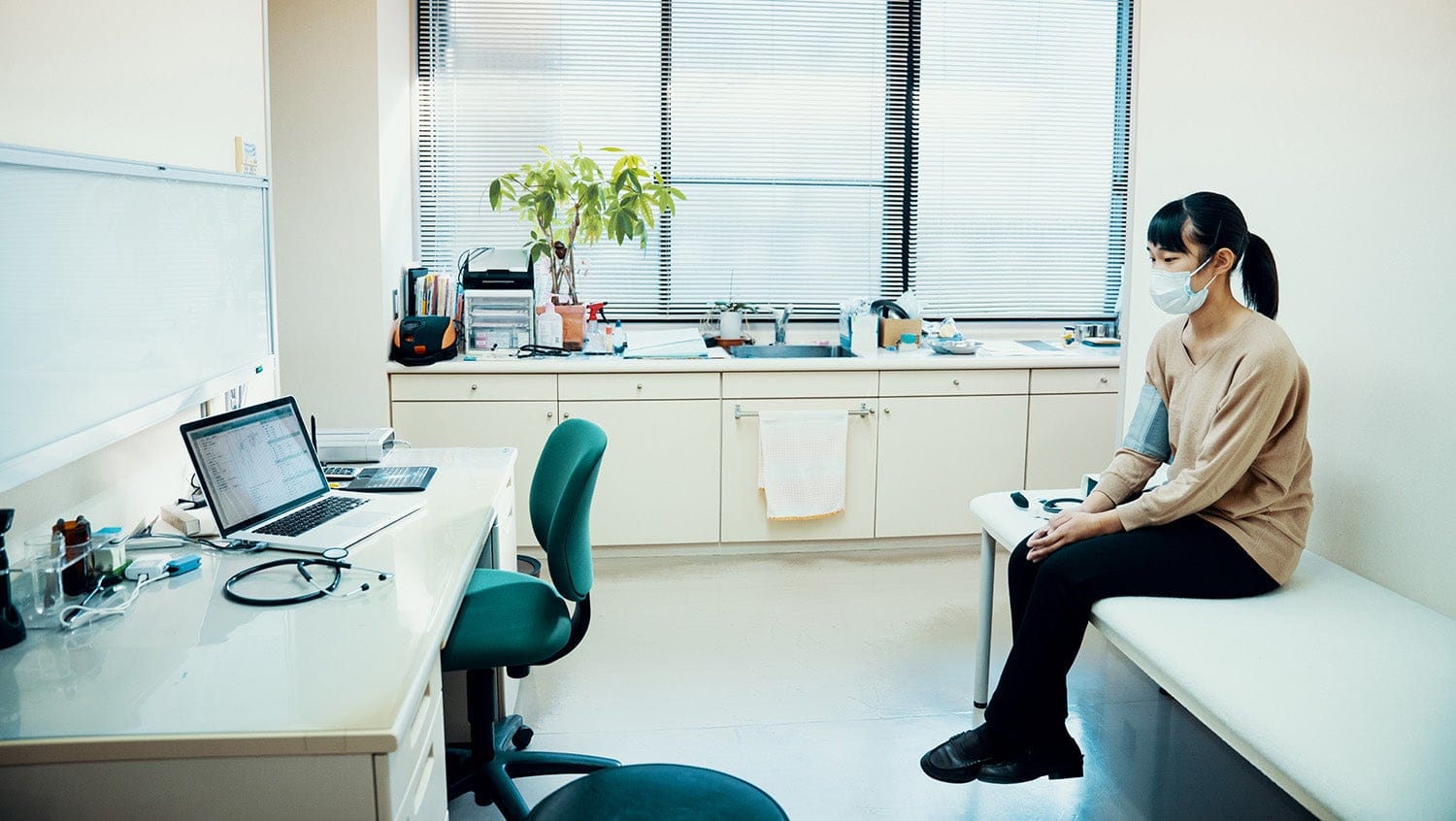We Must Fortify Primary Care to Treat Long COVID in Vulnerable Communities
May 4, 2021

Getty Images
About 10-30% of patients who've had COVID-19 feel effects months later. Treating long-term COVID symptoms means reimaging our healthcare systems, particularly for vulnerable communities.
Black and Latinx communities have been disproportionately impacted by the COVID-19 pandemic, only highlighting racial inequities embedded into healthcare systems. U.S. and global healthcare systems must be prepared to address the long-term impacts of COVID-19, whether it’s mental health, social determinants of health, or the emerging syndrome long COVID.
An estimated 10 to 30% of patients who have been diagnosed with COVID-19 report lingering and new symptoms weeks and months after recovering from the acute illness, which is referred to as long COVID. According to the Centers for Disease Control and Prevention, there have been 31,924,610 reported COVID-19 cases in the U.S. alone, with 569,711 deaths, as of April 27, 2021. That translates to millions of people who may need treatment for long COVID.
To meet the moment and ensure racial inequities aren’t being perpetuated in the most vulnerable areas, the U.S. needs a strengthened primary care system. Sabrina Assoumou, MD, MPH, an infectious disease physician at Boston Medical Center (BMC) and co-author of the new paper “Long COVID and Health Inequities: The Role of Primary Care” talked to HealthCity about long COVID and strategies for reinforcing primary care.
HealthCity: What exactly are we talking about when we say “long COVID”?
Sabrina Assoumou, MD, MPH: COVID-19 is a viral syndrome. Most other viral syndromes—like, for instance, the common cold—last a week or two and then your symptoms are gone. With the first cases of COVID-19, we talked about that initial syndrome—a fever, shortness of breath, fatigue, and other acute symptoms—and getting that clinical diagnosis. Earlier on in the pandemic, we assumed COVID-19 was going to follow the usual syndrome path, where within a week or two your symptoms would be gone.
But we’re starting to see that certain people have lingering symptoms beyond three weeks. Data is still emerging but recent estimates show between 10% and 30% of patients still have symptoms related to their initial acute COVID infection at six months later. That is the syndrome we are defining as long COVID.
HC: What are long COVID symptoms? Do they differ from acute COVID-19 symptoms?
SA: Long COVID symptoms were initially very hard to put together. Some patients describe a “brain fog,” neurologic symptoms, and a lot of fatigue, despite the acute symptoms of shortness of breath or fever being gone.
COVID-19 has only been with us for just over one year. We’re still uncovering symptoms of long COVID and it’s still unclear how long the illness would last.
HC: In your paper you suggest primary care as the best clinical setting to care for long COVID. Why?
SA: Number one: Primary care physicians have a long-term relationship with patients. If a patient has had COVID-19, they know that patient before COVID and after they’ve had COVID. Because long COVID symptoms can be vague—for example, a patient experiencing brain fog—it often can be difficult or take a while to diagnose. A primary care provider who has a long-term relationship with that patient is well-positioned to be able to identify new symptoms and take part in long-term care.
Primary care physicians coordinate care. Patients may see a subspecialist for their lungs, a cardiologist for their heart, and an infectious disease specialist. Each will focus on their area of expertise. But the primary care doctor could synthesize all of that information and coordinate all necessary care.
Navigating our healthcare system is very difficult. There are language barriers, but beyond that, understanding the locations and different layers of the system can be very difficult and confusing. A primary care provider will work as a clear point of contact to help navigate that system.
Finally, one of the major concerns of the COVID-19 pandemic is the mental health impact. I really love the position of primary care to be able to think not only of the physical symptoms, but to also focus on the mental health aspects working alongside mental health clinicians or psychiatry.
HC: You mention having to strengthen primary care to address long COVID. What would that entail? How can we fortify primary care to meet this emerging chronic disease?
SA: Number one is we have to strengthen primary care in the sense of training. This is a new disease and we are still learning. We must provide easily accessible training for primary care providers and, really, all healthcare workers. It should answer these questions: What is the basic definition of long COVID? What are its symptoms? What should you look out for with your patients? How do you address each of these symptoms? Having this concise toolkit would be crucial for a busy practitioner.
The second thing is providing resources. I am an infectious disease physician and I act as a primary care clinician for some of my patients living with HIV. Our clinic works as a one-stop shop where we have a psychiatrist and mental health counselors who are part of the team. We need those type of resources for long COVID treatment in primary care, so, for example, an internal medicine or family physician could do a patient’s initial assessment, but patients need more time with a mental health component, and those additional resources could take the time to listen. This model could be reinforced with appropriate reimbursement.
The other important piece is diversifying the workforce. Patients of color have been disproportionately impacted by COVID-19, and that means they’ll probably make up a large share of individuals with long COVID. There are data that show that Black and Latinx patients have better outcomes when they are taken care of by racially concordant clinicians. So having primary care physicians, nurse practitioners, or physician assistants from diverse backgrounds who could empathize and identify with patients would be very important.
HC: There have been racial inequities in essentially every stage of COVID-19—from testing to acute treatment to vaccine rollout. In line with diversifying the workforce, how else do we address long COVID treatment so we aren’t perpetuating inequities for generations?
SA: Unfortunately, even initially when we were tracking who was getting diagnosed with COVID-19 or who was being hospitalized, a lot places in the U.S. did not collect racial/ethnic information on patients. So, number one, we need to start by going back to basics with data about who is being impacted, who is being tested, who is being vaccinated and where. Once we collect that data, we can better target our resources to the places and communities that are most in need for emerging long COVID management.
Another form of data that’s going to be important is in clinical and primary care settings is collecting social determinants of health information on patients. At BMC, we have the THRIVE form that we collect on our patients so that we can note not only their medical needs, but also their social needs and provide them information about resources in the community.
Next is funding. We need to provide funding to the areas that have been hardest hit so that they can actually develop their infrastructure to be able to address the different issues related to COVID-19, including long COVID.
Funding could take the form of providing more resources to federally qualified health centers to ensure that there’s equitable access to care. We know that local community health centers see many patients from diverse backgrounds and have patients in rural areas who may be further from hospitals or other care options. At a national level, we have to think about healthcare reform and Medicaid expansion. Those are concrete ways we can provide access to healthcare.
The other aspect is funding to bring treatment to the communities. We can’t sit in tertiary care health centers and expect patients to come to us. We have to go to them. For example, there have been successful efforts at BMC to open vaccination sites in community centers and churches.
Finally, a major aspect is ensuring the voices of people who have been most impacted by the COVID-19 pandemic are at the table, part of planning, building programs, and making decisions. Here’s an example of what happened when that was not the case: drive-through testing sites during the initial phase of the pandemic. Drive-through worked if you have a car, but if you didn’t, you did not have access to COVID-19 testing. If anyone part of the initial planning had gone to some of the hardest hit communities and asked about potential strategies, it would have been immediately flagged as not a helpful option.
HC: Thinking about equitable access, there are many people who are disconnected from the primary care system, and healthcare in general—people experiencing homelessness, who live in very rural areas, etc. How can we increase primary care access to help these communities who were likely hard hit by COVID-19 and could be at risk for high rates of long COVID?
SA: We have to reimagine what we think about as a primary care or clinical setting. For example, think of Boston Health Care for the Homeless Program and the amazing work they do there, really being embedded into the community, having walk-in care options, and not only providing healthcare, but providing support for a variety of social needs. That’s one model for thinking about a primary care setting—not just as a place for medical help and run-of-the-mill healthcare services, but as a place where you can go, in your community, to get your needs addressed.
That will require policy and funding. But to think about dollar signs, this is a model that could potentially save money in the long run.
Managing the long-term implications of the pandemic and long COVID seems like a really tough task, but it gives us an opportunity to reimagine how we set up our healthcare system. The infrastructure and measures we are putting in place could benefit healthcare in the long term.


